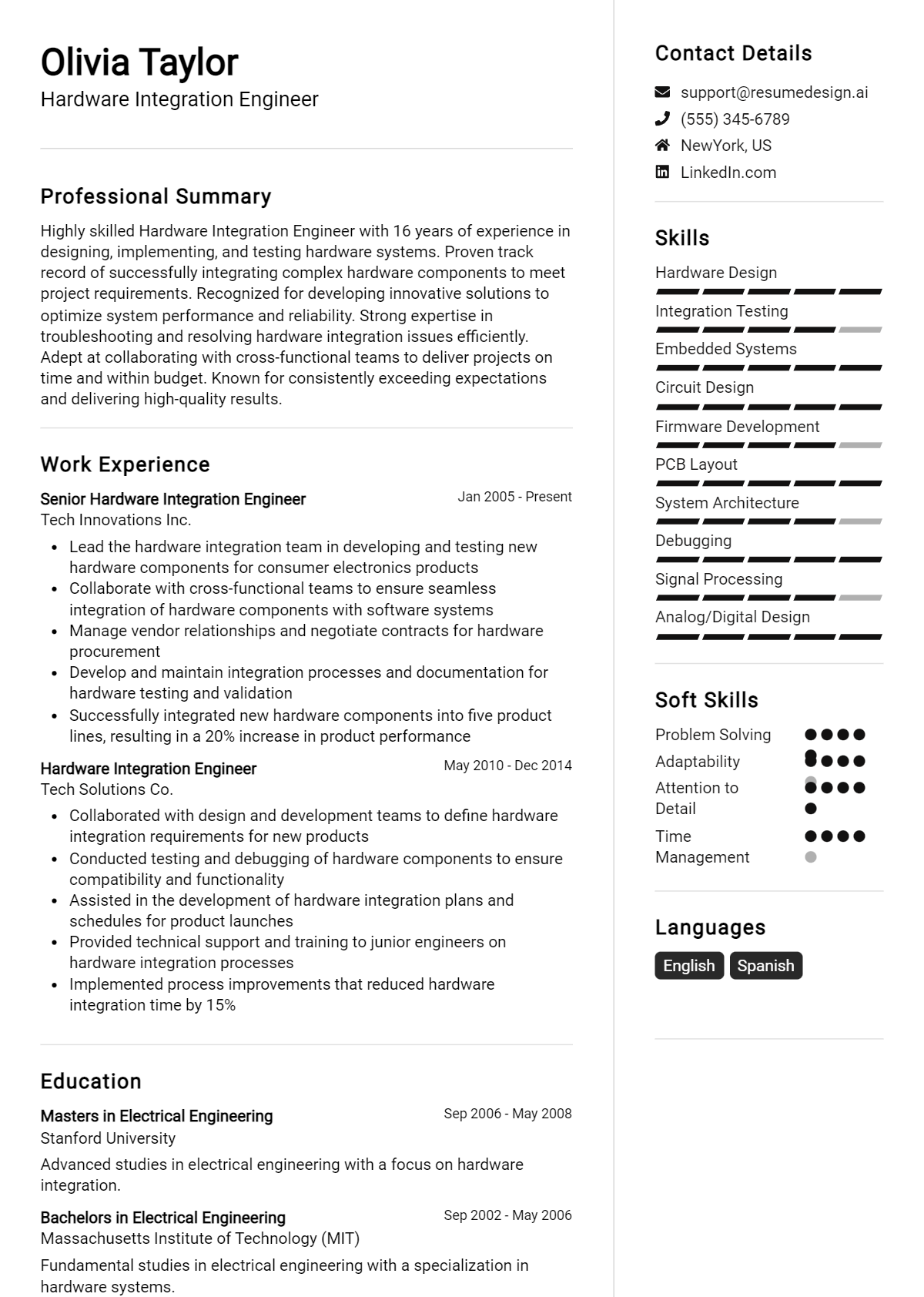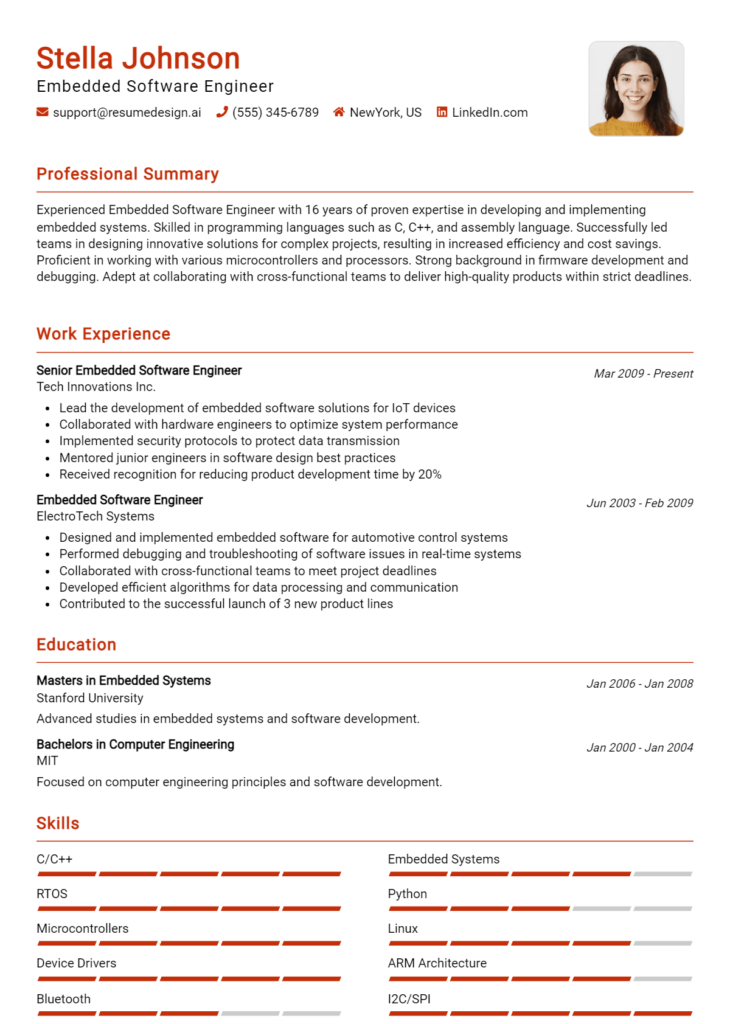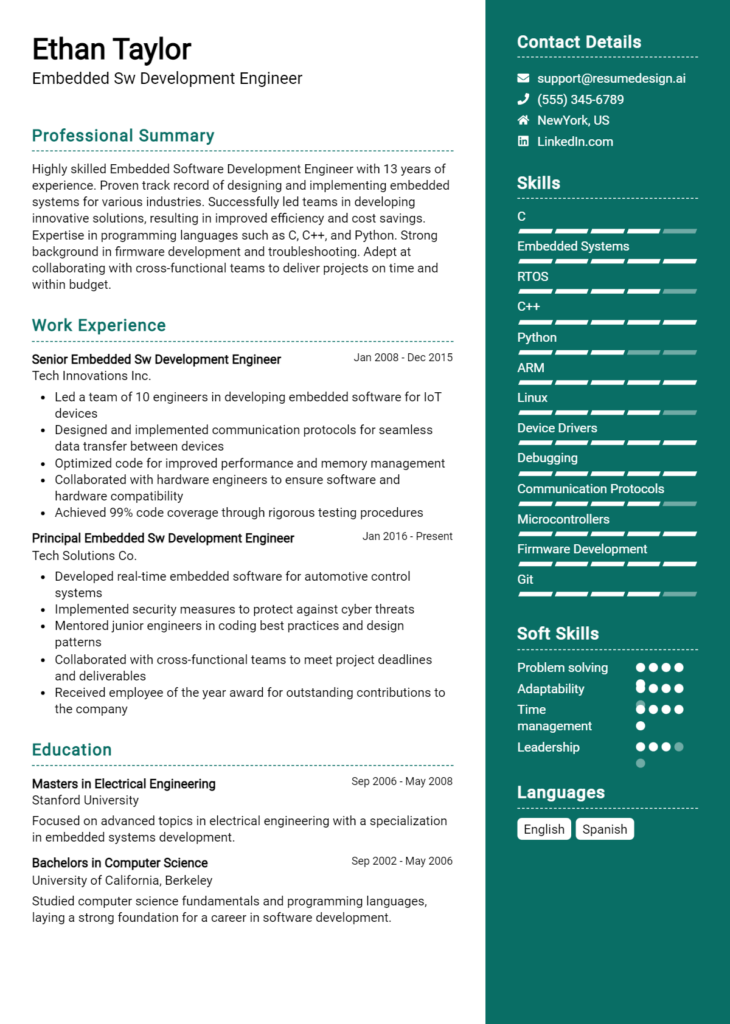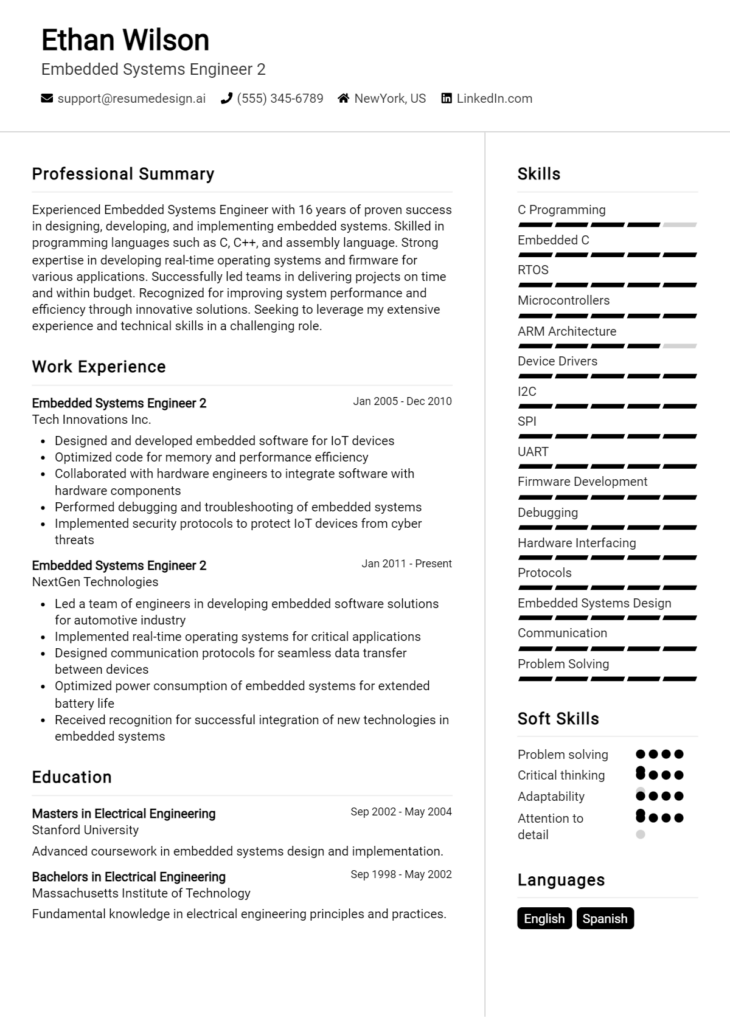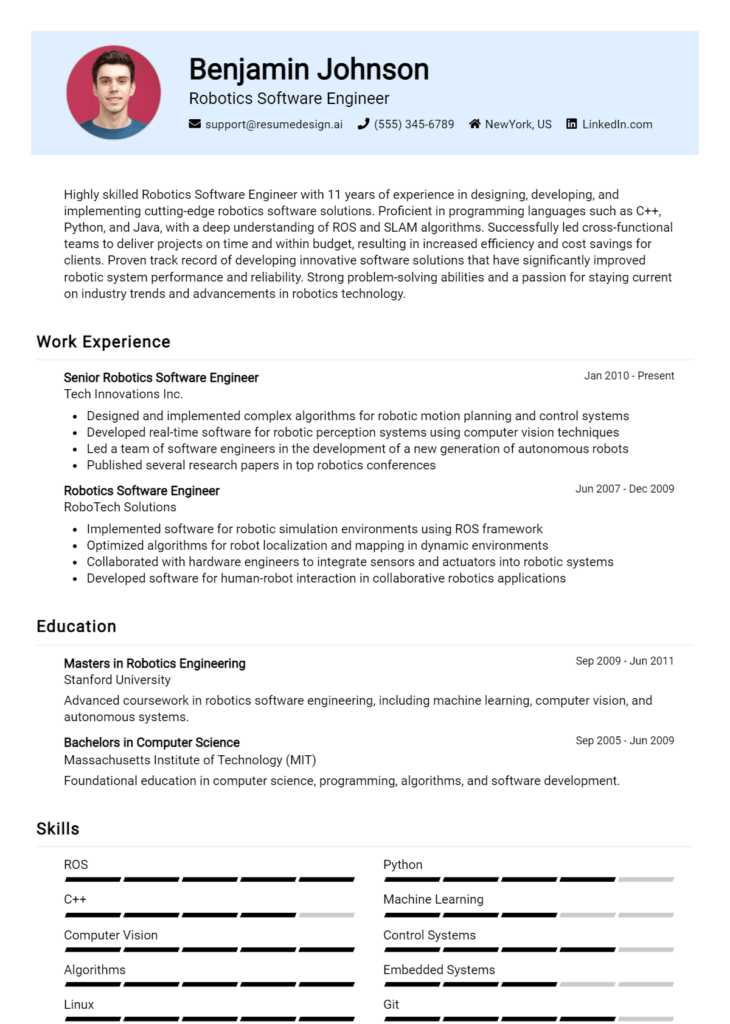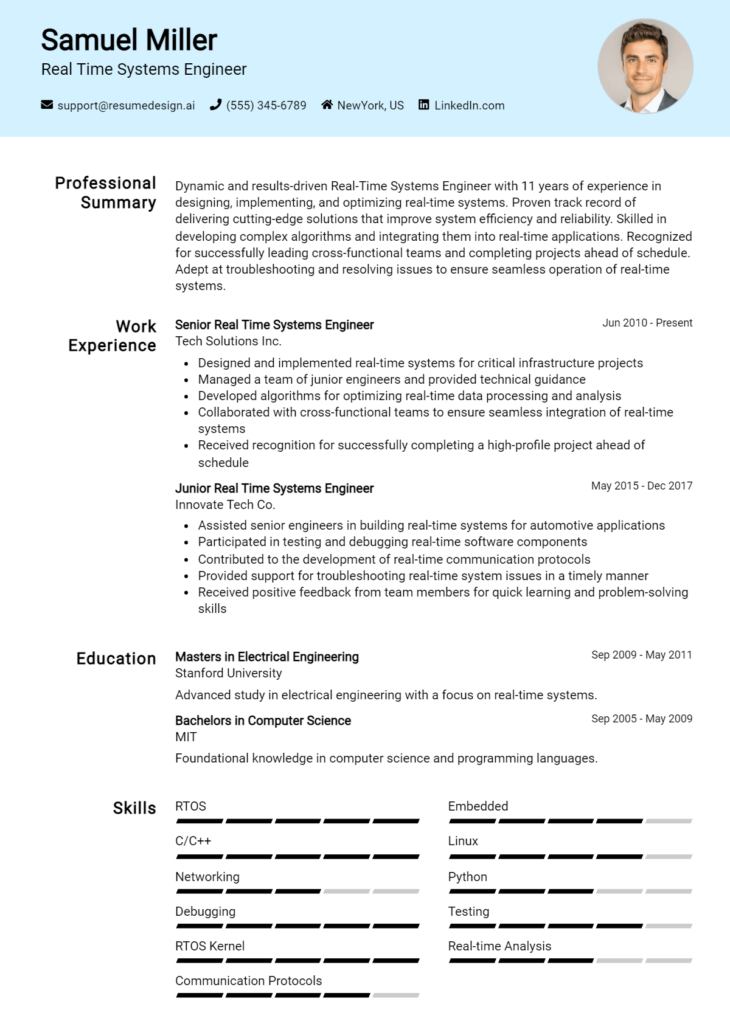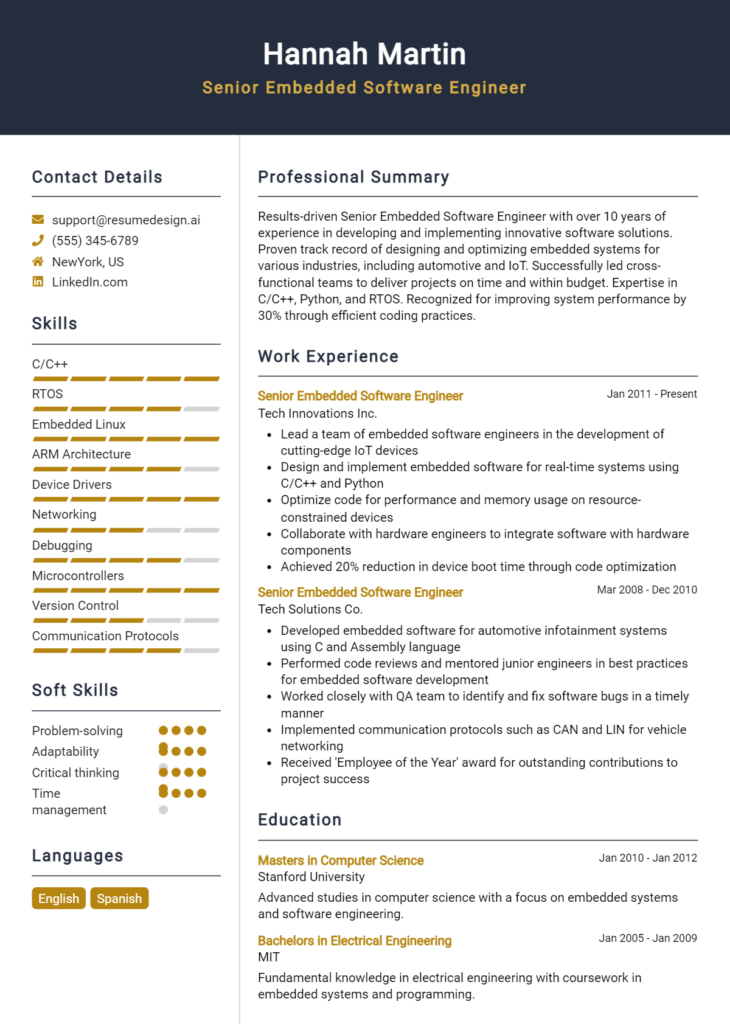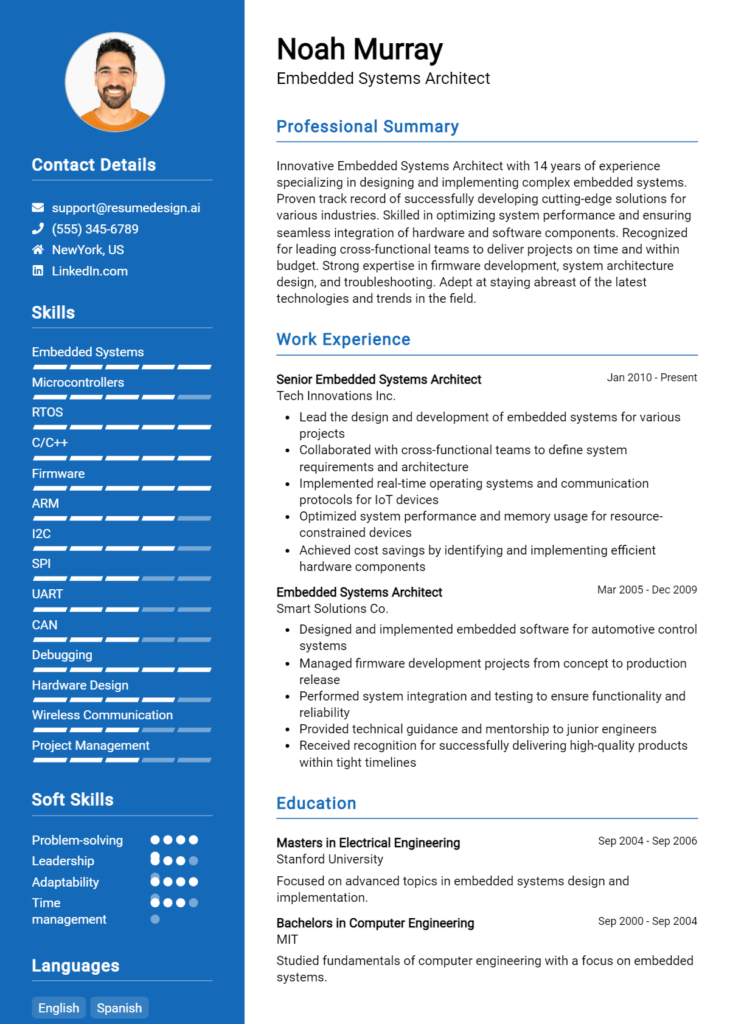Hardware Integration Engineer Core Responsibilities
A Hardware Integration Engineer plays a critical role in bridging various departments by ensuring seamless integration of hardware components into systems. Key responsibilities include collaborating with design, manufacturing, and testing teams to troubleshoot and optimize hardware performance. Essential skills encompass strong technical knowledge, operational insights, and adept problem-solving abilities, all of which are vital for aligning hardware capabilities with organizational goals. A well-structured resume can effectively showcase these qualifications, enhancing career prospects in this dynamic field.
Common Responsibilities Listed on Hardware Integration Engineer Resume
- Collaborate with cross-functional teams to define hardware specifications.
- Develop and execute integration plans for new hardware components.
- Troubleshoot hardware integration issues and provide timely solutions.
- Conduct testing and validation to ensure hardware meets performance standards.
- Document integration processes and maintain technical records.
- Participate in design reviews and provide feedback on hardware performance.
- Implement best practices for hardware integration and compliance.
- Support production teams during hardware assembly and testing phases.
- Analyze data to identify and resolve performance bottlenecks.
- Stay updated on industry trends and emerging technologies.
- Provide technical training and support to team members.
High-Level Resume Tips for Hardware Integration Engineer Professionals
In today's competitive job market, a well-crafted resume is crucial for Hardware Integration Engineer professionals looking to make a lasting impression on potential employers. Your resume serves as the first point of contact, showcasing not just your technical skills but also your achievements and ability to integrate hardware systems effectively. It must reflect your unique qualifications and how they align with the specific needs of the industry. This guide aims to provide practical and actionable resume tips tailored for Hardware Integration Engineer professionals, ensuring that your application stands out from the crowd.
Top Resume Tips for Hardware Integration Engineer Professionals
- Tailor your resume to each job description, emphasizing the skills and experiences that match the specific requirements of the position.
- Highlight relevant experience in hardware integration projects, detailing your role and the technologies used.
- Quantify your achievements where possible, such as by stating how much you improved system efficiency or reduced integration time.
- Include industry-specific skills like FPGA design, circuit analysis, and embedded systems programming to showcase your technical expertise.
- Utilize keywords from the job posting to improve your resume’s visibility to applicant tracking systems (ATS).
- Showcase a portfolio of completed projects or case studies to provide tangible evidence of your skills and accomplishments.
- Ensure your resume is well-organized and easy to read, using bullet points and clear headings for quick reference.
- Incorporate any certifications or specialized training relevant to hardware integration, such as IPC or Six Sigma certifications.
- Keep your resume concise, ideally one page, while ensuring all critical information is included to maintain clarity.
By implementing these tips, you can significantly increase your chances of landing a job in the Hardware Integration Engineer field. A tailored, focused resume that effectively showcases your skills and achievements will resonate more with potential employers, positioning you as a strong candidate ready to tackle the challenges of hardware integration.
Why Resume Headlines & Titles are Important for Hardware Integration Engineer
In the competitive field of hardware integration engineering, a well-crafted resume headline or title can serve as the first impression a hiring manager has of a candidate. This critical element summarizes a candidate's key qualifications and experience in a single, impactful phrase, making it easier for employers to quickly gauge the relevance of the applicant to the position. A strong headline should be concise, relevant, and directly related to the job being applied for, allowing candidates to stand out in a sea of resumes and inviting further examination of their credentials.
Best Practices for Crafting Resume Headlines for Hardware Integration Engineer
- Keep it concise—aim for one to two lines that clearly convey your expertise.
- Be role-specific—use keywords that reflect the job title and responsibilities of a Hardware Integration Engineer.
- Highlight key skills—focus on the most relevant technical and soft skills that align with the job description.
- Include quantifiable achievements—if possible, incorporate metrics or accomplishments that demonstrate your impact in previous roles.
- Use industry terminology—familiarity with the language of the field can enhance credibility.
- Avoid jargon—while industry terms are valuable, ensure that the language is accessible and understandable.
- Tailor your headline for each application—customizing your headline for specific job postings can increase its effectiveness.
- Make it engaging—use action words and power phrases that convey confidence and expertise.
Example Resume Headlines for Hardware Integration Engineer
Strong Resume Headlines
"Innovative Hardware Integration Engineer with 10+ Years in Automated Systems Development"
“Results-Driven Engineer Specializing in Seamless Hardware-Software Integration and Testing”
“Expert in Hardware Integration with Proven Success in Cross-Functional Team Collaboration”
Weak Resume Headlines
“Engineer Looking for Job”
“Experienced Professional”
Strong headlines are effective because they encapsulate the candidate's expertise and accomplishments in a way that is both relevant and engaging, drawing the hiring manager's attention immediately. In contrast, weak headlines fail to impress due to their vague language and lack of specificity, making it difficult for employers to discern the candidate's qualifications or relevance to the position. By utilizing strong, targeted headlines, candidates can significantly enhance their chances of making a positive first impression.
Writing an Exceptional Hardware Integration Engineer Resume Summary
A resume summary is a crucial element for a Hardware Integration Engineer, serving as the first impression for hiring managers. It provides a snapshot of the candidate's key skills, relevant experience, and notable accomplishments, allowing them to quickly gauge the applicant's suitability for the role. A well-crafted summary can captivate attention and encourage further reading, making it essential for candidates to create a concise and impactful statement that is tailored specifically to the job they are applying for.
Best Practices for Writing a Hardware Integration Engineer Resume Summary
- Quantify Achievements: Use numbers to highlight your contributions, such as project budgets managed, timelines achieved, or performance improvements.
- Focus on Key Skills: Identify and emphasize the most relevant technical and soft skills that align with the job description.
- Tailor for the Job: Customize your summary to reflect the specific requirements and responsibilities outlined in the job posting.
- Keep it Concise: Aim for 2-4 sentences that succinctly convey your value and qualifications.
- Use Action Words: Start sentences with strong action verbs to convey your achievements and responsibilities effectively.
- Highlight Relevant Experience: Prioritize mentioning experience that directly relates to hardware integration and related projects.
- Showcase Industry Knowledge: Mention familiarity with industry standards, tools, or methodologies that are pertinent to the role.
- Be Professional: Maintain a formal tone and avoid using overly casual language or clichés.
Example Hardware Integration Engineer Resume Summaries
Strong Resume Summaries
Results-driven Hardware Integration Engineer with over 5 years of experience in developing and integrating complex hardware systems, achieving a 30% reduction in project delivery times through streamlined processes and cross-functional collaboration.
Detail-oriented engineer with expertise in FPGA design and embedded systems, successfully led a team that increased system performance by 25% while reducing costs by 15% in the last two projects.
Dedicated Hardware Integration Engineer skilled in integrating cutting-edge technologies into existing frameworks, with a proven track record of managing projects valued at over $1 million and delivering high-quality results on time.
Weak Resume Summaries
Experienced engineer looking for a position in hardware integration. I have worked on various projects and have good technical skills.
Hardworking professional with a background in hardware. I am eager to contribute to your team and learn new things in the process.
The examples provided illustrate the distinction between strong and weak resume summaries. Strong summaries effectively quantify achievements, highlight relevant experience, and demonstrate a clear alignment with the role's requirements, making them impactful and memorable. In contrast, weak summaries lack specificity, fail to showcase measurable outcomes, and come across as generic, which can diminish a candidate's appeal to potential employers.
Work Experience Section for Hardware Integration Engineer Resume
The work experience section of a Hardware Integration Engineer resume is crucial as it provides a comprehensive overview of the candidate's technical skills, project management abilities, and capacity to deliver high-quality products. This section not only highlights the candidate's hands-on experience with hardware systems and integration processes but also demonstrates their proficiency in collaborating with cross-functional teams to achieve project goals. By quantifying achievements and aligning experiences with industry standards, candidates can effectively showcase their value to potential employers and stand out in a competitive job market.
Best Practices for Hardware Integration Engineer Work Experience
- Clearly define your role and responsibilities in each position to illustrate your contributions.
- Quantify achievements with metrics, such as reduced integration time by 30% or improved system reliability to 99%.
- Highlight specific technologies and tools used in projects to demonstrate technical expertise.
- Emphasize collaboration with teams, such as leading cross-disciplinary projects or mentoring junior engineers.
- Use action verbs to convey a sense of initiative and impact, like "designed," "developed," and "implemented."
- Align your experiences with industry standards and job descriptions to show relevance to potential employers.
- Include notable projects or products that received recognition or awards to enhance credibility.
- Keep descriptions concise and focused, ensuring clarity and readability for hiring managers.
Example Work Experiences for Hardware Integration Engineer
Strong Experiences
- Led a team of 5 engineers in the successful integration of a new hardware platform, resulting in a 40% reduction in deployment time.
- Implemented a rigorous testing protocol that improved system performance metrics by 25% and reduced customer complaints by 50%.
- Collaborated with software development teams to design a seamless interface that enhanced user experience and increased product adoption by 20%.
- Managed cross-functional teams to deliver a critical project ahead of schedule, achieving a budget saving of $200,000.
Weak Experiences
- Worked on various hardware projects without specifying contributions or outcomes.
- Assisted in team activities but did not define specific roles or tasks undertaken.
- Helped with some integration tasks on projects but lacked measurable results or impacts.
- Involved in hardware testing with no detail on the technologies or methods used.
The examples labeled as strong demonstrate clear, quantifiable outcomes and specific contributions that highlight the candidate's technical leadership and collaborative efforts. In contrast, the weak examples are vague and lack measurable achievements, failing to convey the candidate's impact or expertise in a meaningful way. This distinction is essential for making a compelling case to potential employers.
Education and Certifications Section for Hardware Integration Engineer Resume
The education and certifications section of a Hardware Integration Engineer resume is crucial as it underscores the candidate's foundational knowledge and specialized skill sets that are essential for success in this technical role. This section not only showcases the academic background but also highlights industry-relevant certifications and ongoing learning efforts, which are vital in a rapidly evolving field like hardware integration. By providing details about relevant coursework, certifications, and any specialized training, candidates can significantly enhance their credibility and demonstrate their alignment with the job requirements, making them more attractive to potential employers.
Best Practices for Hardware Integration Engineer Education and Certifications
- Emphasize degrees in relevant fields such as Electrical Engineering, Computer Engineering, or Mechanical Engineering.
- List industry-recognized certifications, such as Certified Hardware Engineer (CHE) or Cisco Certified Network Associate (CCNA).
- Include relevant coursework that showcases specific skills applicable to hardware integration, like Digital Systems or Embedded Systems Design.
- Highlight any specialized training programs or workshops attended that pertain to the latest hardware technologies.
- Use clear formatting to differentiate between degrees, certifications, and additional training for easy readability.
- Keep the section concise yet informative, focusing on the most relevant qualifications.
- Update this section regularly to reflect new certifications or courses completed as part of continuous professional development.
- Consider adding GPA or honors if they are notable and relevant to the job application.
Example Education and Certifications for Hardware Integration Engineer
Strong Examples
- Bachelor of Science in Electrical Engineering, University of Technology, 2021
- Certified Hardware Engineer (CHE) - 2022
- Relevant Coursework: Embedded Systems Design, Digital Signal Processing
- Advanced Training: FPGA Design Workshop, 2023
Weak Examples
- Associate Degree in General Studies, Community College, 2019
- Certification in Basic Computer Skills - 2018
- Relevant Coursework: Introduction to Philosophy
- Certification in Microsoft Office Suite - 2020
The examples provided illustrate the difference between strong and weak qualifications for a Hardware Integration Engineer. Strong examples are directly relevant to the role, showcasing degrees and certifications that align with industry standards and technical skills. They indicate a focused educational path and a commitment to continuous learning in hardware integration. Conversely, weak examples reflect qualifications that do not pertain to the necessary technical skills or knowledge areas, such as general studies or unrelated certifications, which do not enhance the candidate’s profile for this specific job role.
Top Skills & Keywords for Hardware Integration Engineer Resume
In the competitive field of hardware integration engineering, showcasing the right skills on your resume can significantly enhance your chances of landing an interview. A comprehensive skill set not only reflects your technical expertise but also highlights your ability to collaborate effectively, solve complex problems, and adapt to rapidly changing technologies. Employers seek candidates who possess a balanced combination of hard and soft skills, ensuring that they can not only perform technical tasks but also communicate effectively with team members and stakeholders. Tailoring your resume to emphasize these skills can make a compelling case for your candidacy and demonstrate your value as a Hardware Integration Engineer.
Top Hard & Soft Skills for Hardware Integration Engineer
Soft Skills
- Effective Communication
- Team Collaboration
- Problem-Solving
- Analytical Thinking
- Time Management
- Adaptability
- Attention to Detail
- Creative Thinking
- Conflict Resolution
- Critical Thinking
- Project Management
- Leadership Skills
- Customer Focus
- Interpersonal Skills
Hard Skills
- Circuit Design
- Embedded Systems
- Firmware Development
- Hardware Testing and Validation
- Signal Processing
- CAD Software Proficiency
- Prototyping Techniques
- Knowledge of Communication Protocols (e.g., SPI, I2C)
- PCB Design
- Power Management
- Debugging Techniques
- Software Development (C/C++)
- System Integration
- Electronics Troubleshooting
- Familiarity with Lab Tools (e.g., Oscilloscopes, Multimeters)
- Knowledge of Regulatory Compliance Standards
- Experience with Version Control Systems (e.g., Git)
By highlighting these skills on your resume, you can effectively demonstrate your qualifications for the role of Hardware Integration Engineer. For more information on how to enhance your resume, consider exploring the sections on skills and work experience.
Stand Out with a Winning Hardware Integration Engineer Cover Letter
I am writing to express my interest in the Hardware Integration Engineer position at [Company Name], as advertised on [where you found the job posting]. With a robust background in hardware design, integration, and testing, combined with my passion for developing innovative solutions, I am excited about the opportunity to contribute to your team. My experience in managing complex integration projects, along with my strong analytical skills, positions me uniquely to support [Company Name] in achieving its technological goals.
In my previous role at [Previous Company Name], I successfully led a cross-functional team in the integration of multiple hardware components into a cohesive system. This involved collaborating closely with software engineers, system architects, and quality assurance teams to ensure seamless interoperability and performance. I took the initiative to develop comprehensive testing protocols that not only enhanced system reliability but also reduced integration time by 30%. My hands-on experience with various hardware platforms and my proficiency in using diagnostic tools will allow me to quickly adapt to the specific technologies used at [Company Name].
I am particularly drawn to this position because of [Company Name]’s commitment to innovation and excellence in hardware solutions. I am eager to leverage my expertise in hardware integration to help drive new projects from concept to completion. My proactive approach to problem-solving, coupled with my ability to communicate technical concepts clearly to non-technical stakeholders, ensures that I can facilitate collaboration across departments and contribute to a positive team dynamic.
I look forward to the opportunity to discuss how my background, skills, and enthusiasms align with the needs of your team. Thank you for considering my application. I am excited about the prospect of contributing to [Company Name] and am eager to bring my expertise in hardware integration to your esteemed organization.
Common Mistakes to Avoid in a Hardware Integration Engineer Resume
When crafting a resume for a Hardware Integration Engineer position, it's crucial to present your skills and experiences effectively. However, many candidates make common mistakes that can hinder their chances of landing an interview. Avoiding these pitfalls can help you create a compelling resume that showcases your technical expertise and integration capabilities. Here are some mistakes to watch out for:
Lack of Specificity: Vague descriptions of past roles can dilute your impact. Clearly outline your responsibilities and achievements with specific metrics or outcomes to demonstrate your contributions.
Ignoring Relevant Keywords: Many companies use applicant tracking systems (ATS) to filter resumes. Failing to incorporate relevant industry keywords can result in your resume being overlooked.
Overly Technical Language: While technical proficiency is essential, using excessive jargon can alienate hiring managers who may not be familiar with every term. Strive for clarity and balance technical details with understandable language.
Neglecting Soft Skills: Focusing solely on technical skills can be a mistake. Highlighting soft skills such as teamwork, communication, and problem-solving abilities is crucial, particularly in integration roles that require collaboration.
Inconsistent Formatting: A cluttered or inconsistent resume can be off-putting. Use uniform fonts, bullet points, and headings to ensure your resume is easy to read and visually appealing.
Omitting Relevant Projects: If you have worked on significant projects or integrations, failing to mention them can be a lost opportunity. Include noteworthy projects that demonstrate your expertise and problem-solving abilities.
Listing Responsibilities Instead of Achievements: Simply listing job duties does not show your value. Focus on accomplishments and how you improved processes or outcomes in your previous roles.
Not Tailoring the Resume: Sending the same resume for every application can be detrimental. Tailor your resume for each job by aligning your experiences and skills with the specific requirements of the position you are applying for.
Conclusion
As we conclude our exploration of the Hardware Integration Engineer role, it's important to highlight the essential skills and experiences that can set you apart in this competitive field. We discussed the significance of a strong foundation in hardware design, the ability to work collaboratively with software teams, and the expertise in debugging and testing complex systems. Additionally, we emphasized the need for proficiency in various tools and technologies that are pivotal to successful hardware integration.
To enhance your chances of landing your next role as a Hardware Integration Engineer, we encourage you to take a moment to review and refine your resume. A well-crafted resume tailored to this specific job role can significantly increase your visibility to potential employers.
To assist you in this process, consider utilizing the following resources:
- Explore resume templates to find a layout that showcases your skills effectively.
- Use our resume builder to create a professional resume quickly and easily.
- Check out resume examples for inspiration on how to present your qualifications and achievements.
- Don't forget to enhance your application with a compelling cover letter by utilizing our cover letter templates.
Take action today and ensure your resume reflects the expertise and capabilities that make you an ideal candidate for a Hardware Integration Engineer position!

